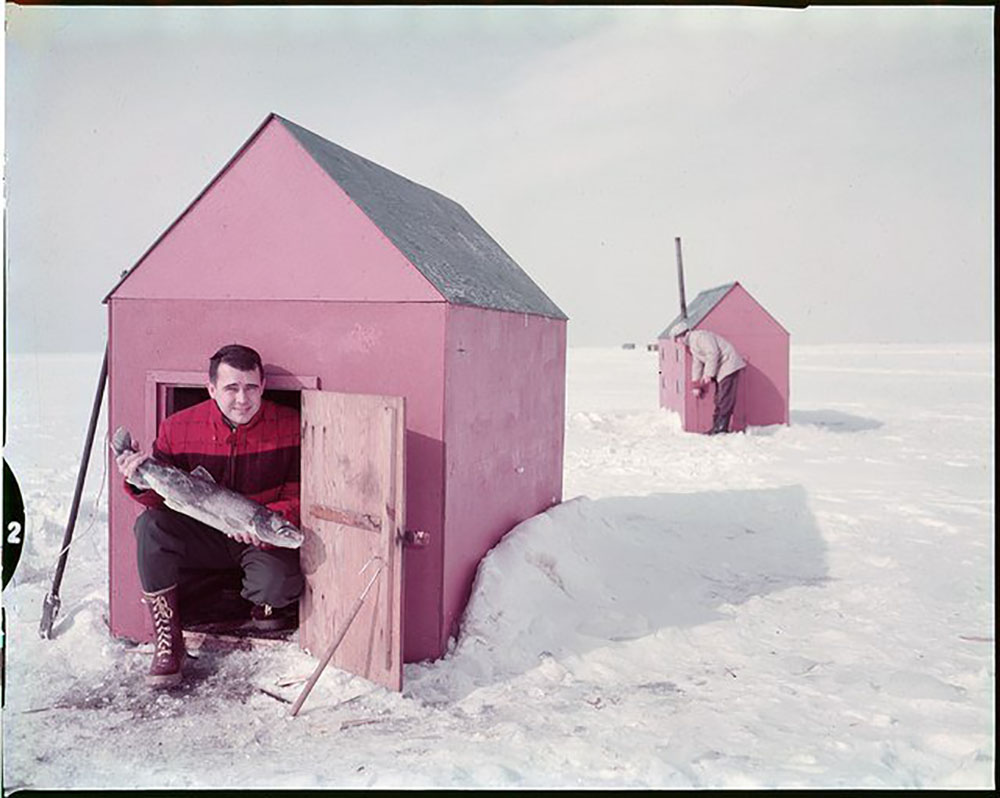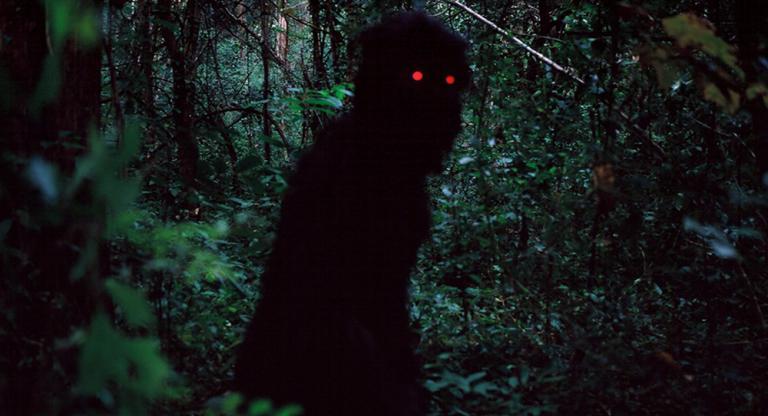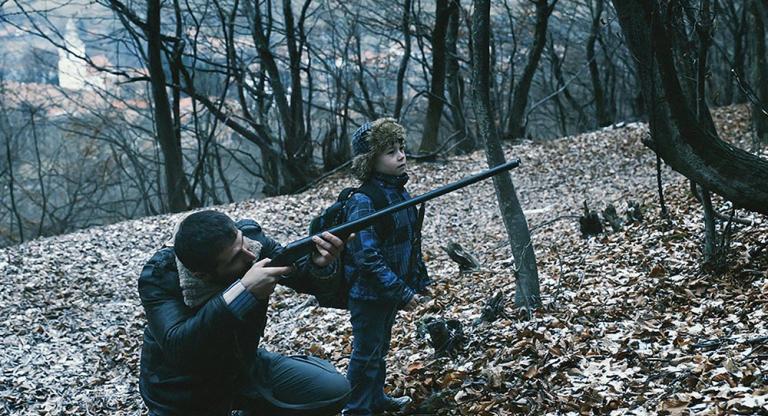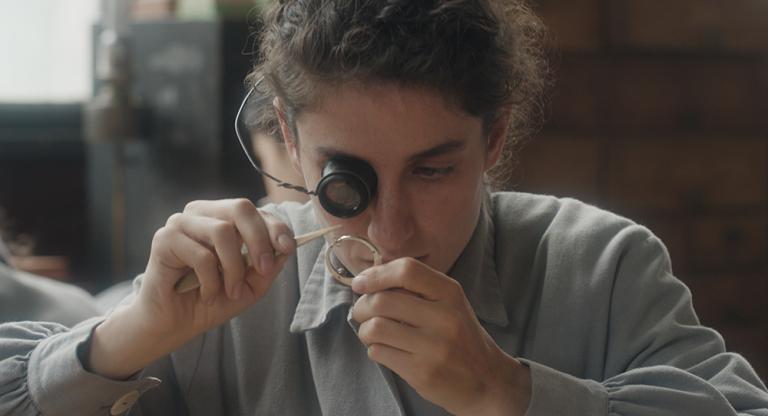Whether at odds or overlapping, the “legitimate” theater and its two-dimensional cinematic cousin are vital artforms forever under threat. Devotees of the communal pleasures offered by a one-act two-hander or a weekend-long repertory series are beset by myriad home-viewing options, insurmountable expenses, and the still reverberating first seasons of Covid-19. Still, we retain the pick of the litter in this purported cultural capital, and every night offers a fresh opportunity to enjoy a heterogenous display of performances on screen and off.
Across the firmament of New York’s movie colony, filmmaker Rachel Wolther and choreographer/actress Eleanore Pienta have carved out a unique niche for their genre-bending corpus. Seamlessly moving back and forth across the footlights, the pair brought a signature combination of movement and stagecraft to the short film Snowy Bing Bongs Across the North Star Combat Zone (2017) and a commissioned dance for the New York City Marathon opening ceremony. Given their shared penchant for dance routines, screwball antics, and micro-budget resourcefulness, it was only a matter of time before Wolther and Pienta returned to the stage.
If April is the cruelest month, it’s been uncharacteristically kind to Wolther, whose forthcoming feature, The French Italian, won a much-deserved New York Women in Film and Media grant just a few weeks ago. Fresh off of production, she made her theatrical debut this season with Paul W. Kruse’s play Eelpout, reuniting with longtime collaborator Pienta for the production’s off-beat choreography. Presented at the downtown black-box mainstay Wild Project as part of the Fresh Fruit Festival, Kruse’s breezy two-act study in Midwestern masculinity offered a perfect vehicle for Pienta’s choreographic stylings and Wolther’s inherent comedic timing.
Set against the backdrop of a bachelor-party ice-fishing trip, Eelpout whiplashes between gleeful laughter and stark melodrama, climaxing with an elegant and sensitive fish orgy mating dance. The usual “Will they or won’t they?” tension between a soon-to-be-married everyman and his lonely best guy friend is swiftly jettisoned in the first act, disguising questions of sexuality and desire with scene after scene of naturalistic banter.
Having recently recovered from my lifelong aversion to live theater, I made a beeline for Wild Project on opening night. For 90 minutes I was rapt: amused and deeply moved by the work on stage. Armed with a litany of questions, I cornered Rachel and Eleanore after the show. But a celebratory mood prevailed and we went for drinks instead. When Eelpout concluded its weekend-long run, I finally caught up with the braintrust, whose answers below have been edited for maximum vibe.
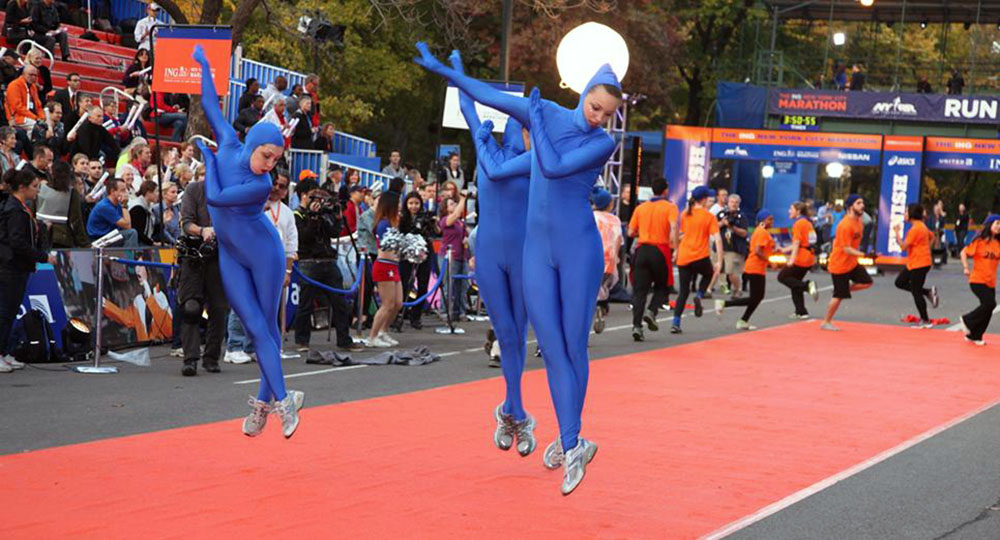
Caroline Golum: Let’s get an easy one out of the way: how did you two meet, and how did this working relationship come to fruition?
Eleanore Pienta: Rachel and I met making See You Next Tuesday (2013), the cult classic by Drew Tobia. She produced it and I starred in it. Shortly thereafter, and quite wildly, my dance comedy troupe, Cocoon Central Dance Team, was commissioned to choreograph the opening ceremony for the New York City Marathon. We enlisted the producing talent of Rachel and directing talent of Alex to craft an intro video for the live performance.
Rachel Wolther: I was blessed to collaborate with Eleanore Pienta again, who I work with frequently and most spectacularly on Snowy Bing Bongs. She brought her amazing vibes to the dance sequences, and created something with so much joy that also pushes forward the narrative and embodies the spirit of the whole show.
CG: I loved this play—the simple staging, the tragic romance, the specific cultural setting. And I know your work, Rachel, mostly as a filmmaker, I didn’t even know you did theater! How did Eelpout come across your transom?
RW: [Playwright] Paul W. Kruse and I went to film school together many years ago. He’s since moved to the Twin Cities, but last spring he was visiting NYC for his audio play, Once Removed, which premiered at the Audio Storytelling sidebar at Tribeca Film Festival.
We went out drinking, and I asked to read what he was working on, which turned out to be Eelpout. I was instantly obsessed—and frankly amazed at how creatively aligned we were despite several years of separation. I really wanted to see it performed; I wanted to see [characters] Sven & Ole kiss! So I begged Paul to let me direct it and figure out how we could put it on in New York.
EP: When Rachel was talking about [Eelpout] over drinks, I asked if she needed a choreographer, and she was like, “Yeah, actually. Do you want to do it?” I think we’re both really good at problem solving in different ways, we’re constantly “yes anding” each other’s ideas to build them up. There’s a level of trust and respect between us that makes collaborating really fun and quite easy.
RW: Even though I had literally never done a play and didn't know anything about NYC theater, I convinced [Paul] it was a good idea. We entered into a few different grants and play development programs and then were accepted into Fresh Fruit, which seemed like a good fit in terms of finding the right audience for the show, and also the scope/scale of how we wanted to do it, since I knew Wild Project is a great space for dancing.
CG: Eelpout touches on a lot of narrative notes: it’s a male-odrama; it’s a story of identity, shame, acceptance; but it’s a comedy first and foremost. Something that struck me about this production is how it retained your most identifiable trademarks: the Wolther wit, the Pienta kineticism. Did you have to adjust your respective styles or sensibilities when you switched from screen to stage?
RW: I pretty much only make comedy, not always intentionally. People just seem to laugh at me and so I try to lean into it. A lot of comedy on screen comes from reaction shots and the timing of the way different pieces combine, which is quite similar on stage. But with Eelpout, I have to use the staging to draw the audience's gaze to the right spot at the right time. That was challenging for me and fun to work on.
Both The French Italian and Eelpout have crossover in the dumb puns and silly jokes that are throughout the text. They're also both about couples and queerness, Eelpout more overtly so, which is a recurring theme in my work and life. The French Italian is more negative in tone than Eelpout, which I think speaks to Paul's optimistic outlook on life. The script does a beautiful job of being both silly and touching. It hits on a deeper emotional level than my film work; it's tackling some bigger questions about how a person can choose to be.
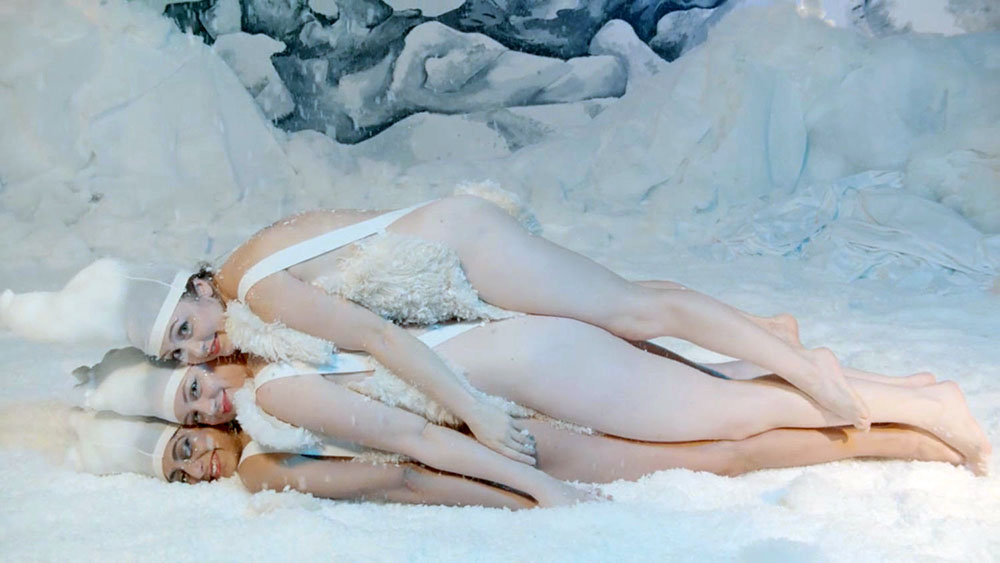
CG: And at the climax of the story, seemingly out of nowhere, is this remarkable fish orgy dance number. This is an Eleanore question: how do you even begin to choreograph a fish orgy?
EP: Paul noted that he wanted this moment to feel like a dream ballet; he referenced the Gene Kelly and Cyd Charisse dance from Singin’ in the Rain. I mean, that scarf! Knowing that the actors we cast might not be dancers, I really relied on the script, wanting the emotion to inform the movement. I also watched YouTube videos of eelpout fucking, which essentially just looks like fish fighting and kicking up dirt. A classic underwater rodeo!
I approached choreography as an actor, really—developing the intrigue and curiosity between Sven and Eelpout. I am a firm believer that what your body doesn’t do can be just as powerful as what it can do. So I started the first rehearsal with a warm-up and exercises where we just made fools out of ourselves—moving like a pretentious, rich old woman; like a squirrel that can’t fucking find it’s acorn; like a kid that doesn’t want to set the table; etc; etc. I gauged how [the performers’] bodies moved and used that as a jumping-off point.
A dance won’t succeed if the actors are worried about “getting the move,” so I kept things simple and character driven. I brought an arc to the song and then infused the dance with what each of their bodies brought. A perfect example of this is when the three fish come in to break up Sven and Eelpout—each one had a specific way their fish moved, and every time they entered was so funny because each was so distinct.
CG: There are probably more similarities than differences between, say, a low-budget independent film and an off-Broadway (or off-off-Broadway) production. But the actual process must be so different! Was it a big transition for you two, going from directing or dancing on camera to on stage?
RW: A lot of it is the same: the way I approach talking to actors, for example. First we work on the internal emotional logic of the characters, their motivation, stuff like that. Then we switch to working on the physicality, speed, rhythm, etc. What was really different was the time spent on rehearsing. I was not able to fine tune moments as they happened, like I would in a movie. Compared to a film—especially a low budget film, which always means a super fast schedule—rehearsing a play takes place over geologic time.
EP: I love [film and theater] so much. But coming from live dance, I do love a full-on dance number. That means you gotta know the choreo and you’ve gotta hit it. A live audience gives you that energy that propels you, and if you make a mistake, you must keep going, there’s nothing else you can do. The adrenaline lifts you. On screen, if you fuck up, you can stop and then restart. You also can piece together choreography from moments.
RW: On film I can always go back, pick up a line or two to get them exactly the way I like them best. But since this was a theatrical production, it was more like one of those wind up toys, like those walking teeth. We spent weeks winding up the show, trying to imbue all of the best ideas into it, and then when the lights came up I just had to watch and hope they didn't chatter themselves into a corner or anything. To be clear, the actors did a wonderful job! I was very pleased!
EP: The most exciting thing about choreographing and dancing on screen is that you have a dance partner in the DP, and boy is that exhilarating. Snowy Bing Bongs was based off of a live show, so all the dances were completely choreographed. Each moment in the dances could be, and was, accentuated by the movement of the camera or the edit. I think for any film that has choreography—and that doesn’t mean dance, but movement that is timed with the camera—there should always be a choreographer / movement coordinator around, and/or the DP and actor should be able to find it together. My favorite relationship on set as an actor is with the DP. Because it’s a dance, and at the end of the day it’s just you and me, baby. You find me, I’ll find you.
Eelpout recently concluded a run at Wild Project as part of the Fresh Fruit Festival. Snowy Bing Bongs Across the North Star Combat Zone is streaming on MUBI. See You Next Tuesday is streaming on Tubi. The French Italian is forthcoming.
“Catching Up” is a column that finds filmmakers and artists in the middle of making new work.
